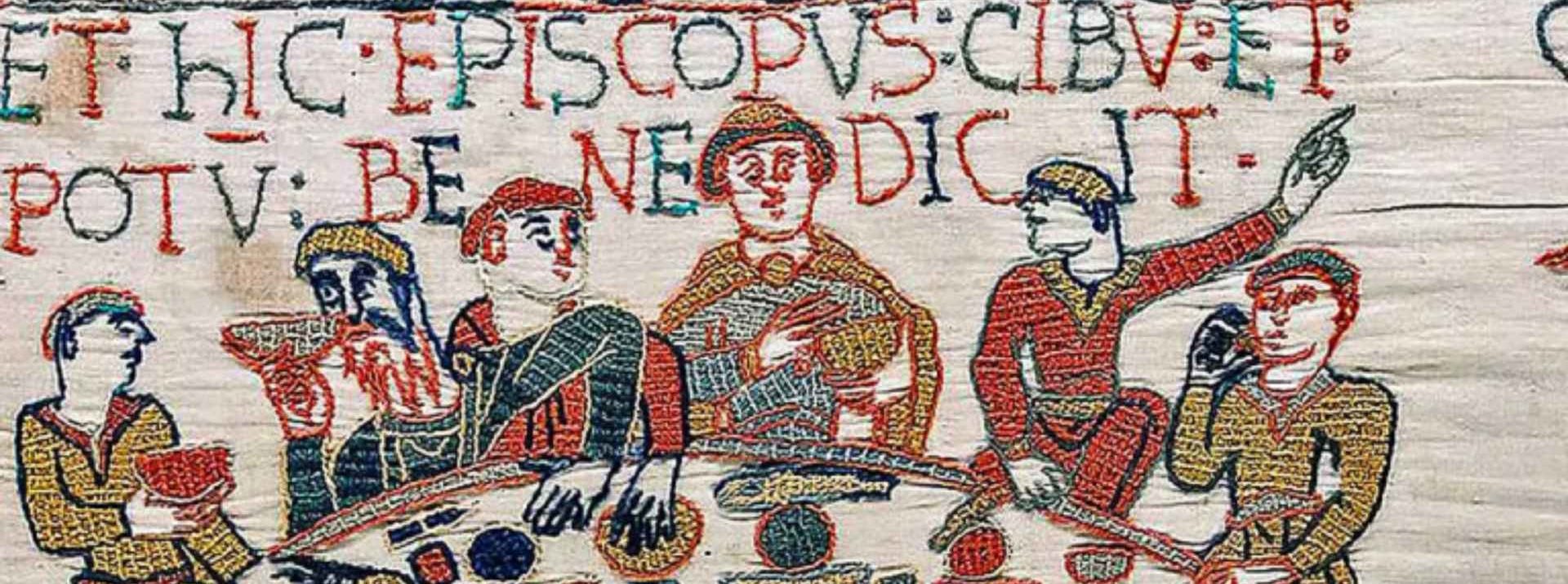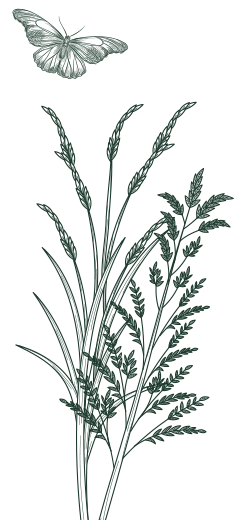
The Bayeux Tapestry

A famous work of art dating from the 11th century, the Bayeux Tapestry is actually a woollen embroidery on a linen canvas, and is one of the must-sees in Normandy. Its size is impressive: 68.50m long and 70cm wide.
What is the Bayeux tapestry?
In nine panels, it recounts theconquest of England by William, then Duke of Normandy, in 1066, after the Battle of Hastings. At just 39, he became William the Conqueror and reigned over an Anglo-Norman empire stretching from northern England to south-western France until his death in 1087.
The Bayeux tapestry was apparently commissioned by the Bishop of Bayeux, William’s half-brother, to decorate the cathedral in 1077. We don’t know the authors of the work, but we do know that they used 4 different embroidery stitches: stem stitch, chain stitch, split stitch and couching stitch, also known as “Bayeux stitch”.
But what can we see on this imposing 10-colour embroidery? The main canvas depicts 626 different characters, 37 buildings, 41 ships and 202 animals – a true document of life in the 11th century. Guillaume is, of course, the hero. We also see old King Edward choosing William as his successor in 1064 and sending Harold, his brother-in-law, to inform him.
But when the king dies, Harold proclaims himself king of England. William and his army cross the Channel and head for Hastings. On October 14, 1066, the two armies clashed at the Battle of Hastings. The story told by the Bayeux tapestry ends on the evening of this battle, showing the flight of the English troops. Odon, William’s half-brother and bishop of Bayeux, was also present.
History of the Bayeux tapestry
The tapestry was first preserved for several centuries in Bayeux Cathedral. It was then sent to the Louvre Museum in Paris in 1803, after the French Revolution. It soon returned to Bayeux, however, in 1812, where it was occasionally exhibited to the public at the Hôtel de Ville. Since 1842, it has been on permanent display for all to enjoy.
Before the Second World War, the tapestry was put in a safe place, until the Germans moved it to the Sarthe in 1941. It was then sent to the Musée du Louvre in 1944. Since then, it has inspired artists and popular culture the world over. In 2025, it will be exhibited in a new, modern space. The story of the Bayeux tapestry is far from over…
Information, rates and schedules
The Bayeux Tapestry Museum is open daily from February 1 to December 31. Times vary, but are generally from 09:30 to 12:30 and then from 14:00 to 18:00. Full price is €9.50, with a reduced price of €7.50. Students and schoolchildren pay just €5, and children under 10 get in free. In 2020, a special rate of just €5 is available to all. An audioguide in several languages is included. After admiring the tapestry, visitors are treated to an exhibition and film. You can easily spend 1h30 in the museum.
Bayeux is less than 17km north of the 4-star L’Escapade campsite in Cahagnolles. It takes about 20 minutes to get there, via the D99 and then the D572 to Bayeux. The Bayeux tapestry, a key work of art from the Middle Ages, is a must-see during your camping vacation in Calvados.



